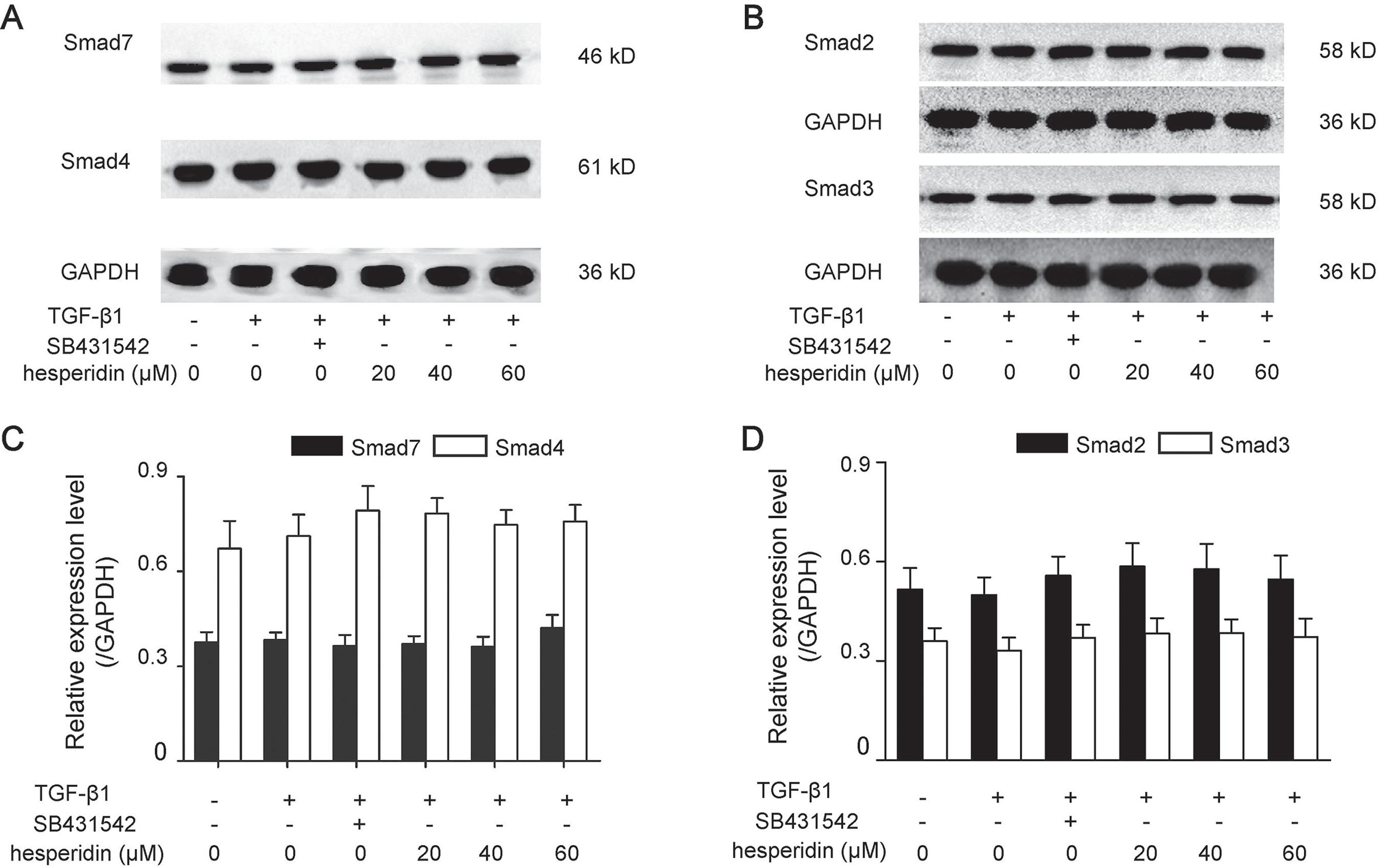Hesperidin, a natural compound, suppresses the epithelial-to-mesenchymal transition through the TGF-β1/Smad signaling pathway. However, studies on the detailed effects and mechanisms of hesperidin are rare. The present study showed that, for A549 alveolar epithelial cells, the anti-proliferative effects of hesperidin occurred in a dose-dependent manner, with an IC50= 216.8 µM at 48 h. TGF-β1 was used to activate the Smad signaling pathway and induce the epithelial to mesenchymal transition in cells. Treatment with hesperidin or SB431542 was used for antagonism of Smad pathway activation. Hesperidin inhibited the increase in ɑ-SMA and Col1ɑ-1 and the decrease in E-cadherin in a dose-dependent manner from concentration of 20 µM to 60 µM, as assessed by both ELISA and Western blotting assays; however, there was no significant effect on cellular morphological alterations. Moreover, the Western blotting assay showed that, in the cytoplasm, hesperidin and SB431542 had no significant effect on the protein expression of Smad 2, 3, 4, or 7 as well as 2/3. However, 60 µM hesperidin and SB431542 significantly decreased p-Smad2/3 protein expression. From the above results, it is concluded that hesperidin can partly inhibit the epithelial to mesenchymal transition in human alveolar epithelial cells; the effect accounts for the blockage of the phosphorylation of Smad2/3 in the cytoplasm rather than a change in Smad protein production in the cytoplasm.
Keywords:
Hesperidin; Epithelial-to-mesenchymal transition (EMT); Smad signaling pathway; Inhibition





